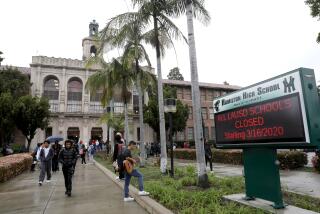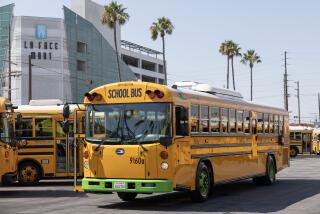UAL’s Treatment of Airport Facilities Bonds Raises Concerns
United Airlines’ aggressive bankruptcy strategy could damage airports’ ability to finance building projects and threatens the holders of $413 million in special facilities bonds at Los Angeles and San Francisco airports.
UAL Corp., the airline’s parent, classified its airport facilities bonds as unsecured debt when it filed for Chapter 11 bankruptcy protection in December, and therefore isn’t required to make interest payments on the bonds.
In fact, United failed to pay $16 million in interest due this week.
Now, worried the bonds could become worthless, some bondholders would like airports with facilities financed with United bond issues to evict the airline and allow other carriers to move in and pay the debt service.
If bondholders end up losing money because of United’s strategy, similar financings in the future could carry higher interest rates to reflect the increased risk to investors. That would raise the cost of doing business for airlines, said Kurt Forsgren, an airport credit analyst at rating service Standard & Poor’s.
Another result, Forsgren said, could be that airlines will balk at paying for new terminals and other projects, forcing airports to finance a greater share of facilities and improvements.
“It would be very foolish for the airport not to look out for the bondholder even if technically they don’t have a legal obligation,” said Zane Mann, publisher of the California Municipal Bond Advisor newsletter.
The city agency that operates Los Angeles International Airport said it can’t step in at this point.
United is current in its lease payments to the airport, and it “would not be legal for the airport to try to strong-arm United” to pay its debts to bondholders, said Eduardo Angeles, managing assistant of the airport division of the Los Angeles city attorney’s office.
“We are in the bleachers on this particular issue,” he said.
Bondholders fear that U.S. Bankruptcy Judge Eugene Wedhoff will allow UAL to continue to use the facilities financed by the bonds and that he will declare the airport bondholders general creditors of the airline.
Holders of unsecured debt in a bankruptcy typically collect less money than creditors with debt secured with property or other assets that can be liquidated.
Bud Byrnes, chief executive of RH Investments in Encino, which represents holders of more than $1 million of the bonds at face value, said it would be “a historical precedent” for the judge to declare bondholders general creditors.
He noted that US Airways Group Inc. -- which this week emerged from bankruptcy protection after eight months -- continued to pay its bondholders during that time.
United spokesman Jeff Green defended the airline’s strategy, saying that not making interest payments on the bonds was the appropriate way to treat unsecured debt in a bankruptcy filing.
Green contended that if the airline made the payments without the Bankruptcy Court’s approval, other creditors could protest that the carrier was putting one group ahead of others owed money.
The bonds in question include issues for Denver International Airport and John F. Kennedy International Airport in New York.
At LAX, UAL used two bond offerings totaling $225 million to construct a giant cargo terminal, upgrade passenger terminals and build an underground customs and immigration center for international flights.
At the airport in San Francisco, the airline used two bond offerings totaling $188 million to finance construction of an international terminal.
The offerings were channeled through government agencies that sponsor bond issues by private companies in which the money goes to public infrastructure projects.
This type of financing gives investors a tax break and reduces the company’s cost of borrowing.
Mann said a typical pattern in an airline bankruptcy is for other carriers to take over airport facilities and all of the debt.
“Ultimately, the deals get straightened out, though the investors may see the dollar value of their bonds decline until things are sorted out.”
Rivals would like to gain control of some of United’s terminals in Los Angeles.
“The facility constraints at LAX have certainly hampered our ability to grow there,” said Steve Hubbell, properties manager for Southwest Airlines.
“We would be very interested in expanding our levels of service there if additional gates became available,” Hubbell said.
If United’s strategy, which Angeles with the city attorney’s office called “innovative,” survives an expected challenge by creditors, the airline would be able to hold on to its passenger and cargo terminals in the near term without having to make interest payments.
In the longer term, the carrier could end up making fractional payments on the back interest as part of its reorganization.
Times staff writer Jennifer Oldham contributed to this report.
More to Read
Inside the business of entertainment
The Wide Shot brings you news, analysis and insights on everything from streaming wars to production — and what it all means for the future.
You may occasionally receive promotional content from the Los Angeles Times.











